2022 – 2026 Five-Year Action Plan

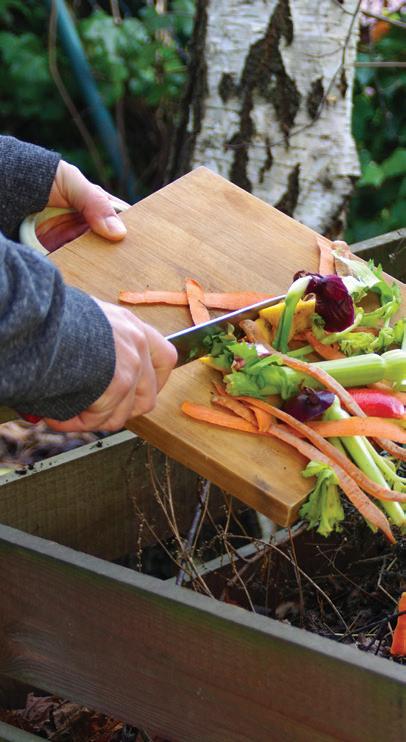


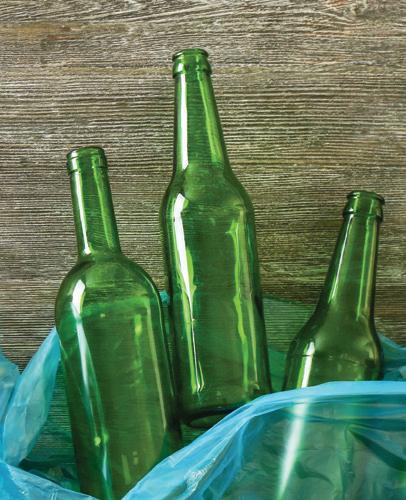 DURHAM REGION LONG-TERM WASTE MANAGEMENT PLAN
DURHAM REGION LONG-TERM WASTE MANAGEMENT PLAN

Five-Year Action Plan 2022 – 2026 | Durham Region Long-term Waste Management Plan
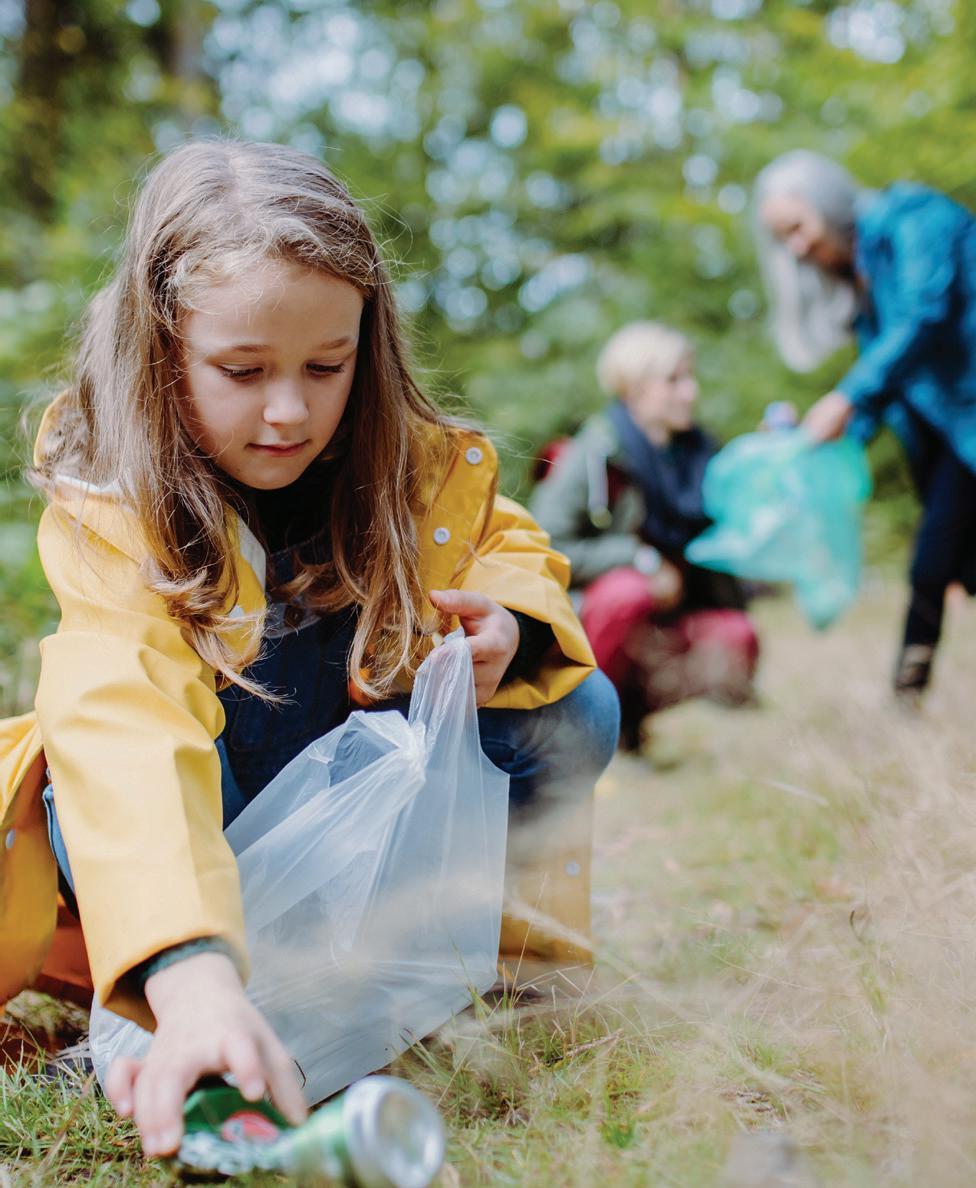
1 Table of Contents Introduction ................................................................................................................... 2 Vision ............................................................................................................................... 3 Guiding Principles 3 Objectives ....................................................................................................................... 4 Monitoring ................................................................................................................ 5 Reporting Timeframe ............................................................................................. 5 Action Plan 7 Timeline for Actions ................................................................................................... 19 Appendix A: Glossary and Abbreviations ............................................................... 24 Appendix B: Objectives, Targets and Short-term Actions 26 Appendix C: Objectives, Targets and Mid to Long-term Actions ....................... 33
Introduction
With the input of the community and stakeholders, we developed the Long-term Waste Management Plan (Waste Plan) in 2022.
The Waste Plan is a roadmap that describes Durham Region’s vision, guiding principles, and objectives for waste management over the next 20 years (2022 to 2040). Our overall goal is to divert as much material as possible from garbage to minimize the need for disposal and recover resources, like energy, from the waste that is left.
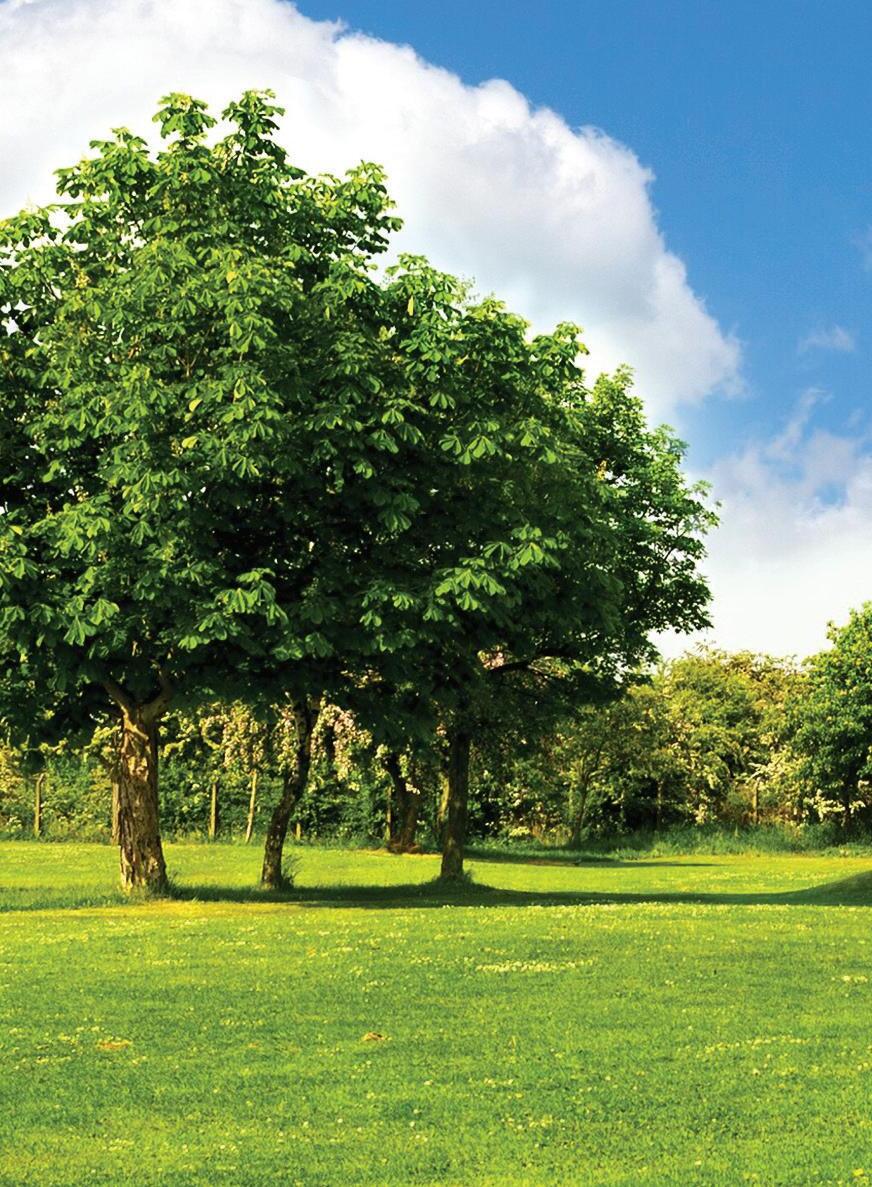
How do we achieve these goals and objectives?
Every five years, we will develop an Action Plan to support the Waste Plan by determining targets, actions, and budgets to achieve the short-term goals while working towards long-term objectives.
This Action Plan (2022 – 2026) reflects the vision, guiding principles and objectives of the Waste Plan.
To learn more and read the full Long-term Waste Management Plan, visit durham.ca/WastePlan.
Five-Year Action Plan 2022 – 2026 | Durham Region Long-term Waste Management Plan
Vision
Together, with our residents, we will reduce the amount of waste we create, and manage the generated waste as a resource. We will build an innovative system, balancing financial needs and environmental sustainability.
Guiding Principles
Emphasize rethink, reduce, and reuse principles as the first steps in reducing waste generation.

Deliver cost effective waste management services to a rapidly growing and diverse population.
Work with producers and importers of designated products and packaging to implement Extended Producer Responsibility and adjust Regional waste programs as required.
Apply innovative approaches to Region waste streams to manage them as resources in a circular economy
Demonstrate leadership in sustainability to address the climate crisis by reducing greenhouse gas emissions from waste management activities.
1 2 3 4 5 3
Objectives
Objective 1
Engage with residents to build an understanding and awareness of the 5Rs (Rethink, Reduce, Reuse, Recycle, Recover) and the Region’s waste management programs and services.
Objective 2
Reduce the quantity of waste we create.
Objective 3
Increase diversion of waste from disposal and support the circular economy.
Objective 4
Support the Region’s greenhouse gas reduction and climate change mitigation efforts.
Objective 5
Protect or improve water, land, and air quality in Durham Region.
Five-Year Action Plan 2022 – 2026 | Durham Region Long-term Waste Management Plan
Reporting Timeframe Monitoring
To help us achieve each of our five long-term waste objectives, we have set out targets, actions and measurements that will guide and monitor our progress.

Targets
Developed to meet the objectives.
Actions
What the Region will do, with our community, to meet the targets.
Measurements
To assess the progress of meeting the targets.
Each Year:
We will report on our progress.
Every 5 Years:
We will review our Action Plan.
This will ensure we are on track in meeting our objectives and will provide opportunities to adjust our targets and actions, if needed. Many of our targets will carry forward into the next plan, with revisions and adjustments as needed.
5
Extended Producer Responsibility
Extended Producer Responsibility (EPR) is the approach Ontario is using to make companies doing business in Ontario fully financially and operationally responsible for the environmental impact of the products and packaging they produce or import into Ontario.
Companies will design collection systems for designated products and manage the end of life recycling or disposal. Currently, tires, electronics, batteries, household hazardous waste and blue box paper and packaging are designated materials. These products are gradually transitioning to EPR.
Circular Economy
A circular economy is a closed loop economic system aimed at minimizing waste and making the most of our resources. In this type of system, all waste is recovered and reused to make new products. This approach replaces the current linear product development system where products are made, used and then disposed.
Producer uses recycled materials to manufacture products and market
Retailer sells product
Extended
Producer Responsibility
Producer is responsible for collecting, processing, recycling and disposing of the packaging and product
Consumer buys and uses product
Recycle to Extract Materials
Raw and Recycled Materials Produce
Repair Used Materials
Design
Circular Economy
$
Consumer Use
Distribute
2022 – 2026
Action Plan
This Action Plan will guide progress toward our five long-term waste objectives.
The following pages list the actions — in simplified wording — planned for the first five years of the Waste Plan. The full Council-approved targets and actions for the Waste Plan (for short- and long-term) can be found in Appendices B and C.
To learn more and read the full Long-term Waste Management Plan, visit durham.ca/WastePlan.
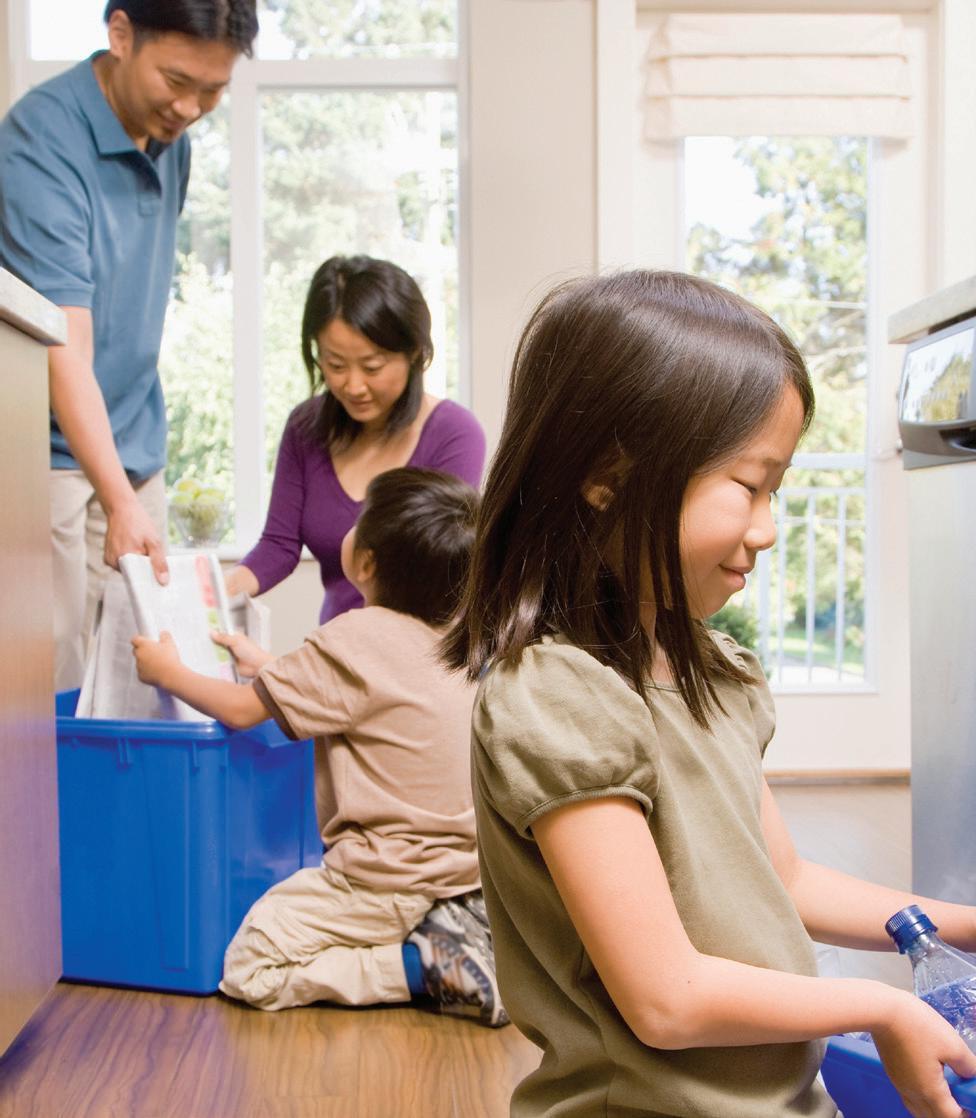
7
Objective 1
Engage with residents to build an understanding and awareness of the 5Rs (Rethink, Reduce, Reuse, Recycle, Recover) and the Region’s waste management programs and services.
Target A
Increase public engagement on the 5Rs through partnerships, increased accessibility, and different media.
Actions
• Work with schools to provide educational content for youth.

• Transition to myDurham 311 for residents to obtain waste information.
• Increase Waste app subscribers and explore the possibility of including donation locations on the app.
• Launch a dedicated webpage on Reduction and Reuse.
• Digital and/or in-person educational opportunities for all residents.
• Evaluate more languages for publications, and promotional and educational materials.
Measurement
Increases since 2018.
Timeline for Target
Short-term
2022 – 2026
Mid-term
2027 – 2033
Long-term
2034 – 2040
Five-Year Action Plan 2022 – 2026 | Durham Region Long-term Waste Management Plan
Objective 2
Reduce the quantity of waste we create.
Target A
Support residents in making behavioural changes to reduce food waste.

Actions
• Continue the Buy it, Eat it food waste reduction campaign.
Measurement
Amount of avoidable food waste in the Green Bin. Avoidable food waste is the edible food that ends up in the compost or garbage (such as moldy bread, over-ripe fruits, etc.).
Timeline for Target
Short-term
2022 – 2026
Mid-term
2027 – 2033
Long-term
2034 – 2040
9
Objective 2
Reduce the quantity of waste we create.
Target B
Support residents in making behavioural changes to reduce the amount of waste generated.

Actions
• Reduce quantities of waste materials generated, such as textiles and single-use plastics.
• Develop waste audit program to measure progress.
Measurement
Annual garbage generation rate.
Timeline for Target
Short-term
2022 – 2026
Mid-term
2027 – 2033
Long-term
2034 – 2040
Five-Year Action Plan 2022 – 2026 | Durham Region Long-term Waste Management Plan
Objective 3
Increase diversion of waste from disposal and support the circular economy.
Target A
Increase diversion of organics from disposal.
Actions
• Build the Mixed Waste Pre-sort and Anaerobic Digestion Facility.
• Enhance the Green Bin program for single-family residences.
• Encourage backyard composting.
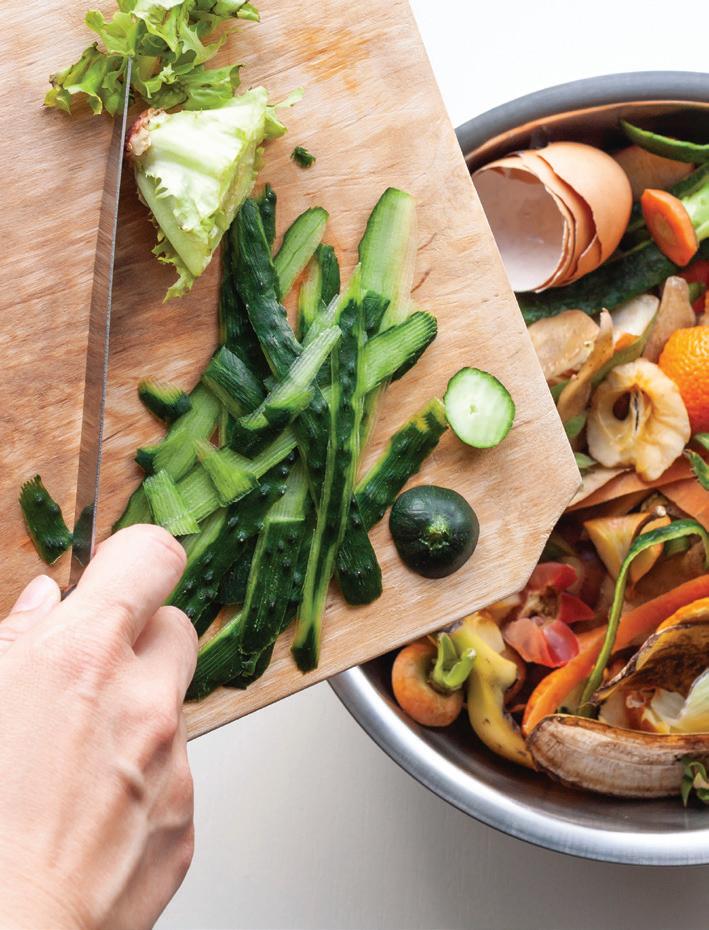
• Expand collection services to Regional facilities and consider service for municipal and institutional facilities (e.g. school boards).
Measurement
Increasing Green Bin diversion.
Timeline for Target
Short-term
2022 – 2026
Mid-term
2027 – 2033
Long-term
2034 – 2040
11
Objective 3
Increase diversion of waste from disposal and support the circular economy.
Target B
Revise by-law 46-2011 to reflect changes to collection and processing programs.
Actions
• Revise by-law to reflect new Extended Producer Responsibility programs and include a section on mixed waste pre-sorting.
• Explore options for collecting waste in mid-to high-density developments.
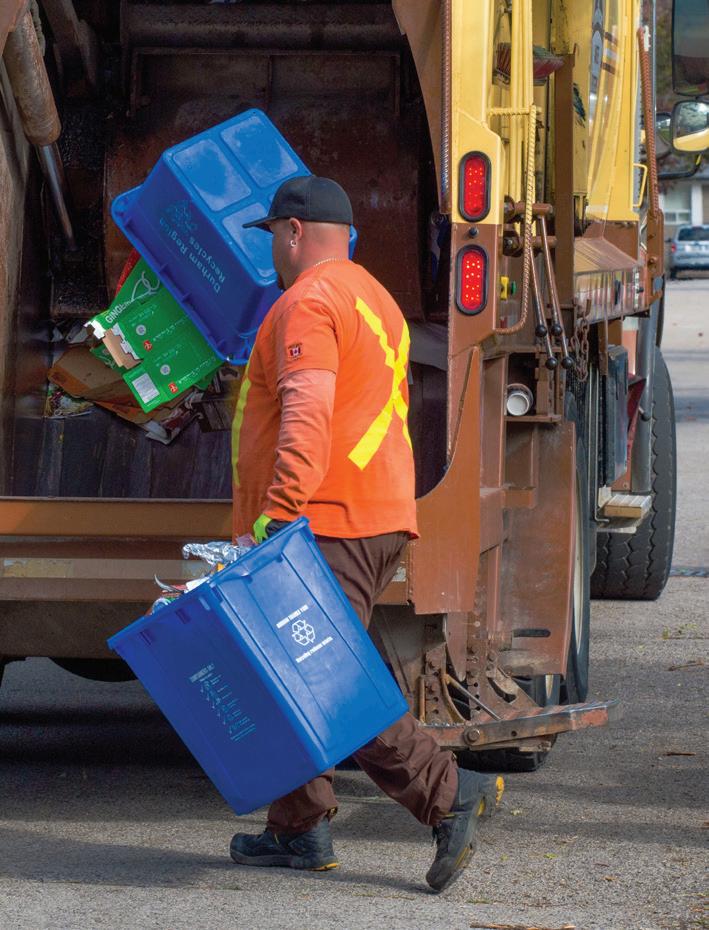
Measurement
Revised by-law.
Timeline for Target
Short-term 2022 – 2026
Five-Year Action Plan 2022 – 2026 | Durham Region Long-term Waste Management Plan
Objective 3
Increase diversion of waste from disposal and support the circular economy.

Target C
Develop a plan that supports Extended Producer Responsibility programs.
Actions
• Work with producers to understand how programs will be rolled out and the impact on the Region.
• Education campaigns to inform residents of changes to programs.
• Transition the programs to producers.
• Investigate ways to reuse or recycle Household Hazardous Waste not covered under regulations.
• Determine best options for Material Recovery Facility and equipment when no longer needed by the Region.
• Evaluate possible changes at Waste Management facilities to adapt to Extended Producer Responsibility regulations.
• Consider options to continue to provide recycling collection service to ineligible sources.
Measurement
Transition to Extended Producer Responsibility.
Timeline for Target
Short-term
2022 – 2026
13
Objective 3
Increase diversion of waste from disposal and support the circular economy.
Target D
Advocate for the expansion of Extended Producer Responsibility programs and increased materials management.
Actions
• Continue participation in waste management committees, advocacy organizations and industry associations.

• Continue to participate in consultations for Federal and Provincial waste management changes.
Measurement
Advocacy efforts.
Timeline for Target
Short-term 2022 – 2026
Mid-term 2027 – 2033
Long-term 2034 – 2040
Five-Year Action Plan 2022 – 2026 | Durham Region Long-term Waste Management Plan
Objective 4
Support the Region’s greenhouse gas reduction and climate change mitigation efforts.
Target A
Develop initiatives to offset or reduce corporate greenhouse gas emissions from solid waste.
Actions
• Explore opportunities to convert contracted collection vehicles to alternative fuels.
• Explore opportunities to convert biogas to renewable natural gas at facilities owned by the Region.
• Identify methodologies to capture greenhouse gas emissions avoidance resulting from waste diversion.
• Analyze how to better recover energy resources from waste operations.
Measurement
Actions taken to reduce greenhouse gas emissions.
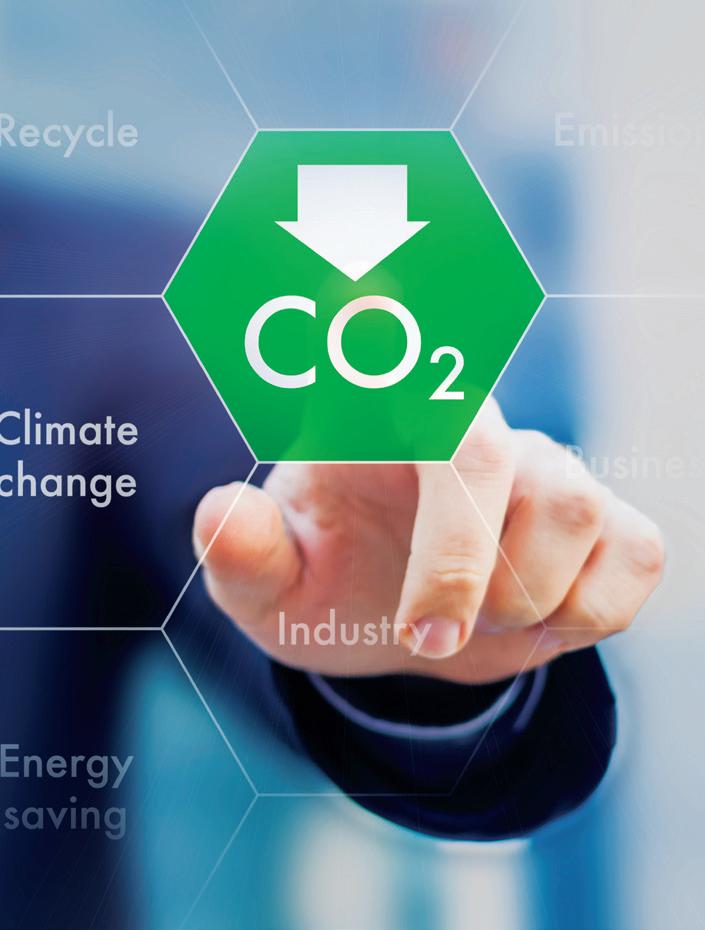
Timeline for Target
Short-term
2022 – 2026
Mid-term
2027 – 2033
Long-term
2034 – 2040
15
Objective 5
Protect or improve water, land, and air quality in Durham Region.
Target A
Optimize waste management facilities.
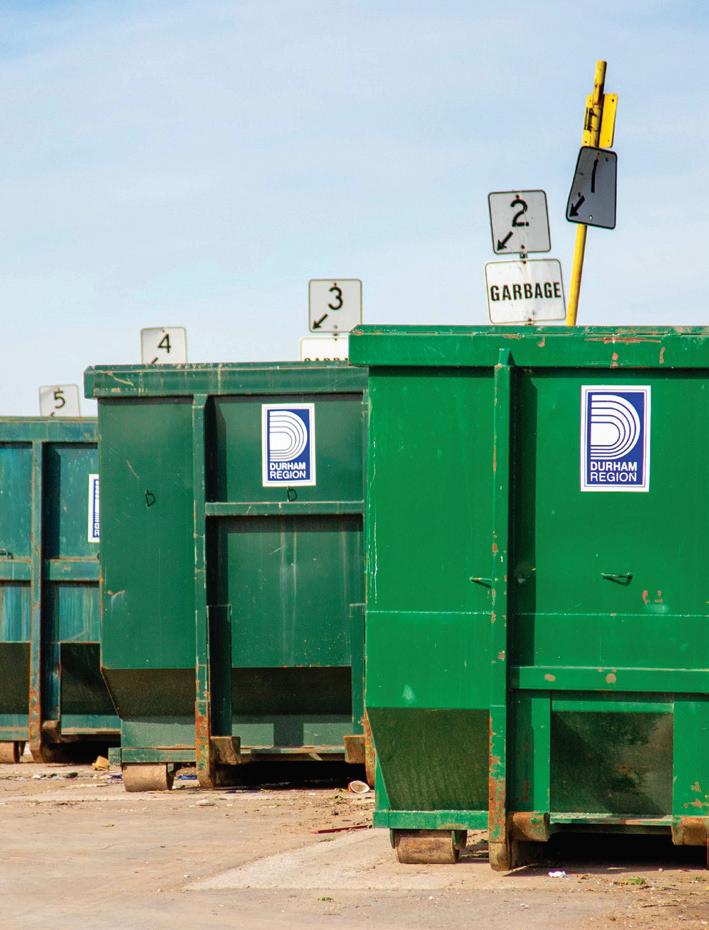
Actions
• Develop options to improve traffic flow and renovate the Oshawa Waste Management Facility.
• Develop actions to improve waste sorting levels at waste management facilities in general.
Measurement
Annual actions to optimize waste management facilities’ operations.
Timeline for Target
Short-term
2022 – 2026
Mid-term
2027 – 2033
Long-term
2034 – 2040
Five-Year Action Plan 2022 – 2026 | Durham Region Long-term Waste Management Plan
Objective 5
Protect or improve water, land, and air quality in Durham Region.
Target B
Increase accessibility to waste management programs and services.
Actions
• Investigate improving convenience for users of the waste management facilities.
• Assess physical accessibility of all waste management facilities.
Measurement
Changes to operating hours at waste management facilities.

Timeline for Target
Short-term
2022 – 2026
Mid-term
2027 – 2033
Long-term
2034 – 2040
17
Objective 5
Protect or improve water, land, and air quality in Durham Region.
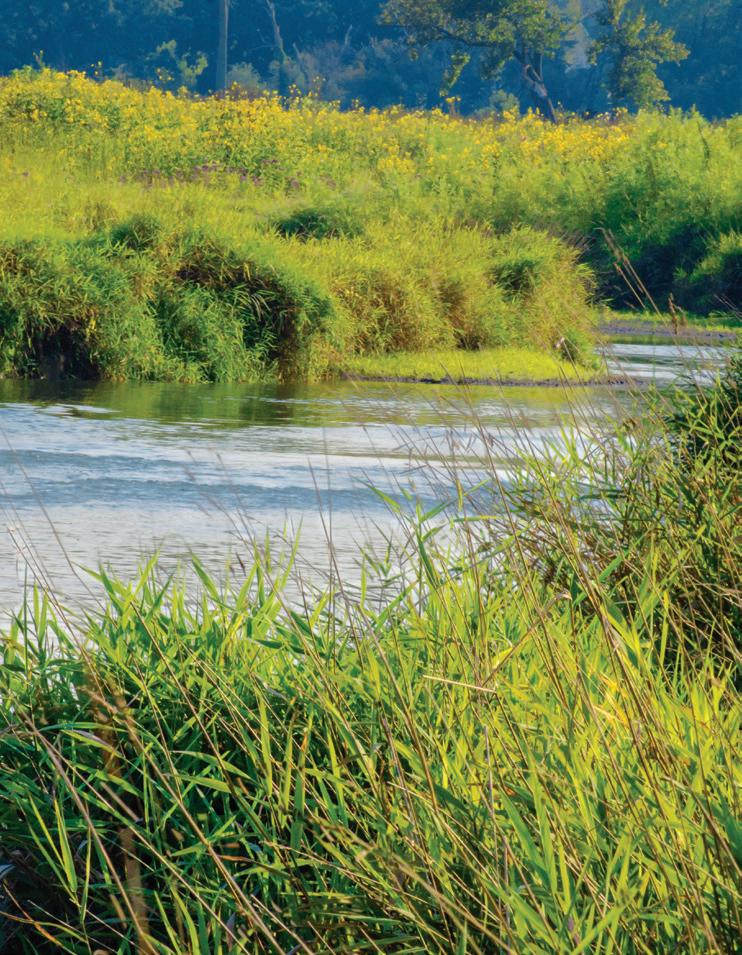
Target C
Explore options to reduce environmental impacts of closed landfills and their potential for future community use.
Actions
• Evaluate outcome of pilot project at Oshawa Landfill for an alternative landfill cover system.
Measurement
Progress toward implementing alternative landfill cover.
Timeline for Target
Short-term
2022 – 2026
Mid-term
2027 – 2033
Long-term
2034 – 2040
Five-Year Action Plan 2022 – 2026 | Durham Region Long-term Waste Management Plan
Timeline for Actions
An important element of any plan is to determine a timeline for goals. We have mapped out a timeline to guide the planning, implementation, and operations of each action. As we work toward completion, there may be factors that impact our timeline. We will review this timeline every five years and make updates when needed.

19
Timeline for Actions
Operation Action Complete Planning Implementation
Objective & Target Actions
Work with schools to provide educational content for youth.
Transition to myDurham 311 for residents to obtain waste information. Increase Waste app subscribers.
1
Launch a dedicated webpage on Reduction and Reuse.
Explore the possibility of including donation locations on the Waste app.
Digital and/or in-person educational opportunities for all residents.
Evaluate more languages for publications, and promotional and educational materials.
2A
Continue the “Buy it, Eat it” food waste reduction campaign.
Reduce quantities of waste materials generated, such as textiles and single-use plastics.
2B
Develop a waste audit program to measure progress.
Build the Mixed Waste Pre-sort and Anaerobic Digestion Facility.
3A
Enhance the Green Bin program for single-family residences. Encourage backyard composting.
Expand collection services to Regional facilities and consider service for municipal and institutional facilities.
Revise by-law to reflect new EPR* programs.
3B
Revise by-law to include a section on mixed waste pre-sorting.
Explore options for collecting waste in mid-to high-density developments.
* EPR = Extended Producer Responsibility
Five-Year Action Plan 2022 – 2026 | Durham Region Long-term
Waste Management Plan
= Five-year review of Long-term Waste Management Plan
21
2022 2023 2024 2025 2026 2027 2028 2029 2030 2031 2032 2033 2034 2035 2036 2037 2038 2039 2040 Short-term Mid-term Long-term
Timeline for Actions (Continued)
Operation Action Complete Planning Implementation
Objective & Target Actions
Work with producers to understand how programs will be rolled out and the impact on the Region.
Develop education campaigns to inform residents of changes to programs. Transition the programs to producers.
3C
Investigate ways to reuse or recycle Household Hazardous Waste not covered under regulations. Determine best options for Material Recovery Facility and equipment when no longer needed by the Region.
Evaluate possible changes at Waste Management facilities to adapt to EPR* regulations.
Consider options to continue to provide recycling collection service to ineligible sources.
3D
Continue participation in waste management committees, advocacy organizations and industry associations.
Continue to participate in consultations for Federal and Provincial waste management changes.
Explore opportunities to convert contracted collection vehicles to alternative fuels.
4A
Explore opportunities to convert biogas to renewable natural gas at facilities owned by the Region. Identify methodologies to capture greenhouse gas emissions avoidance resulting from waste diversion.
Analyze how to better recover energy resources from waste operations.
Develop options to improve traffic flow and renovate the Oshawa Waste Management Facility.
5A
Develop actions to improve waste sorting levels at waste management facilities in general.
Investigate improving convenience for users of the waste management facilities.
5B
Assess physical accessibility of all waste management facilities.
5C Evaluate outcome of pilot project at Oshawa Landfill for an alternative landfill cover system.
* EPR = Extended Producer Responsibility
Five-Year Action Plan 2022 – 2026 | Durham Region Long-term Waste Management Plan
= Five-year review of Long-term Waste Management Plan
23 2022 2023 2024 2025 2026 2027 2028 2029 2030 2031 2032 2033 2034 2035 2036 2037 2038 2039 2040 Short-term Mid-term Long-term

Five-Year Action Plan 2022 – 2026 | Durham Region Long-term Waste Management Plan Glossary and Abbreviations
Appendix A
Glossary and Abbreviations
5Rs
Rethink, Reduce, Reuse, Recycle, Recover
AD
Anaerobic Digestion — A natural decomposition process that uses microbes found in the environment to produce methane, which can be collected and used as a renewable natural gas.
CO2
Carbon dioxide
DYEC
Durham York Energy Centre — An energyfrom-waste facility located in Durham Region that produces energy from the combustion/ burning of garbage that remains after all diversion programs.
EPR
Extended Producer Responsibility — The responsibility producers, importers and brand owners have to reduce the environmental impact of their products and packaging. It extends across the product lifecycle and is also known as cradle-to-grave management.
GHG
Greenhouse Gas — Gases in the Earth’s atmosphere that trap heat; typically refers to carbon dioxide (CO2 ), methane (CH4 ) and nitrous oxide (N2O).
HHW
Household hazardous waste
Ineligible sources
Locations that are not eligible for recyclables collection under the new EPR framework such as industrial, commercial and institutional establishments, municipal facilities and other non-residential locations such as places of worship.
P& E
Promotion and Education
WMF
Waste Management Facility — A facility that accepts materials such as appliances, recyclable materials, carpet, drywall, garbage, scrap metal, wood for a fee. There are five waste management facilities in Durham Region.
25
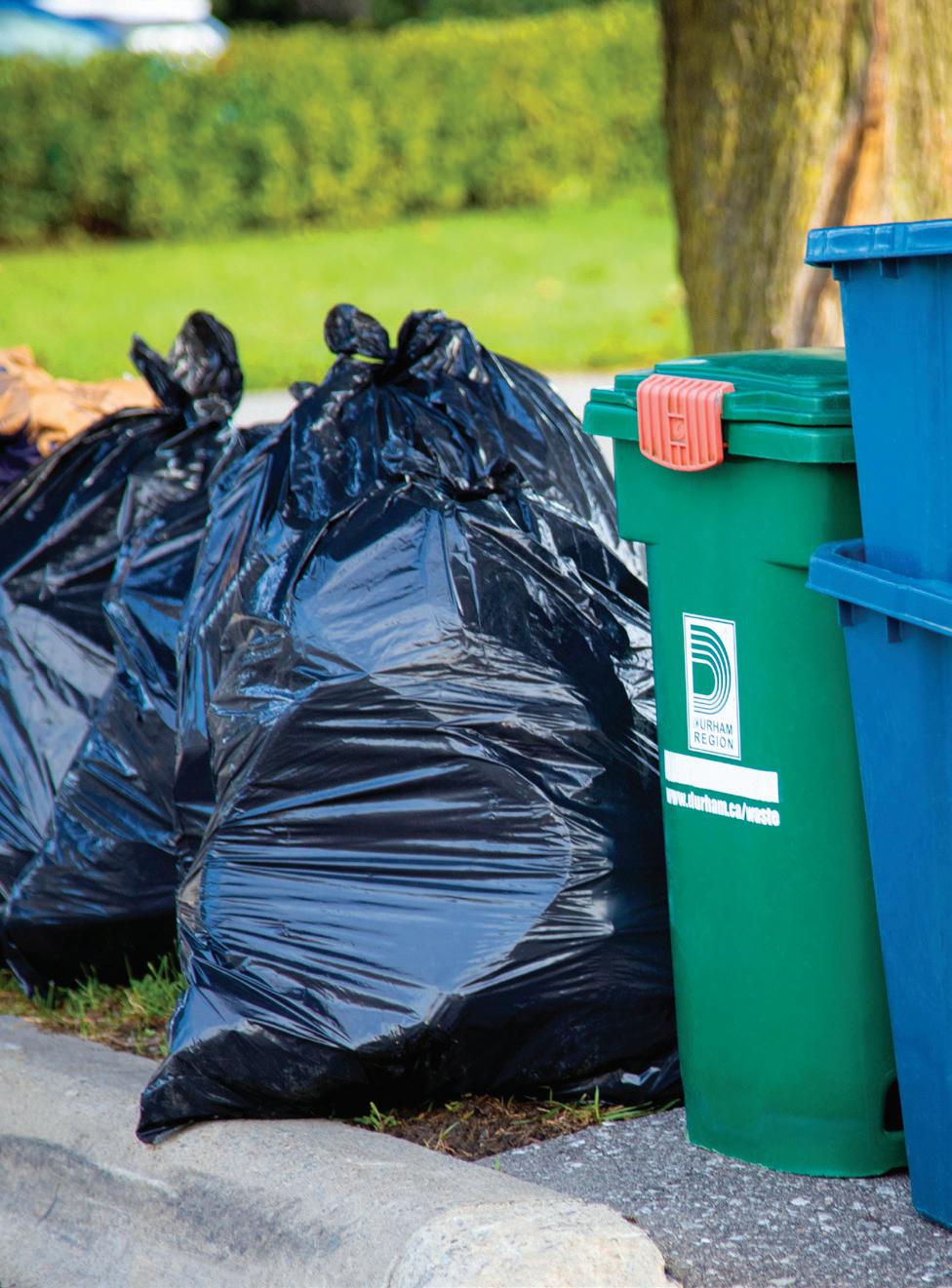
Five-Year Action Plan 2022 – 2026 | Durham Region Long-term Waste Management Plan Objectives, Targets and Short-term Actions 2022 – 2026 Appendix B
Objective 1
Engage with residents to build an understanding and awareness of the 5Rs (Rethink, Reduce, Reuse, Recycle, Recover) and the Region’s waste management programs and services.
Target 1A: Increase public engagement on the 5Rs through partnerships, increased accessibility, and different media.
1A1 Work with schools to provide educational content and increase rethink and reduce activities.
1A2 Transition to a central access point for residents to obtain waste management information.
1A3 Increase Waste app subscribers.
1A4 Add a dedicated section to the Region’s webpage on Reduction and Reuse.
1A5 Investigate the feasibility of including locations of donation centres on the Waste app.
1A6 Develop digital and/or in-person educational opportunities.
1A7 Identify additional languages for publications, P&E materials and outreach events.
27
Short-term 2022 – 2026
Objective 2
Reduce the quantity of waste we create.
Target 2A: Support residents in making behavioural changes to reduce food waste.
2A1 Continue with the Region’s “Buy it, Eat it” food waste reduction campaign.
Target 2B: Support residents in making behavioural changes to reduce the amount of waste generated.
2B1 Reduce quantities of materials generated such as durable goods, textiles and single-use plastics.
2B2 Develop a monitoring program to audit waste setouts and composition on a regular basis.
Five-Year Action Plan 2022 – 2026 | Durham Region Long-term Waste Management Plan
2022 – 2026
Short-term
Objective 3
Increase diversion of waste from disposal and support the circular economy.
Short-term
2022 – 2026
Target 3A: Increase diversion of organics from disposal.
3A1 Develop the Mixed Waste Pre-sort and Anaerobic Digestion Facility.
3A2 Launch an enhanced Green Bin program for single-family residences.
3A3 Encourage backyard composting.
3A4 Expand collection services to Regional facilities and consider service for local area municipal facilities and other institutional users (e.g. school boards).
Target 3B: Revise Waste Management By-law 46-2011 to reflect changes to Regional collection and processing programs and services.
3B1 Revise By-law to reflect new EPR programs.
3B2 Revise By-law to include a new section for the Mixed Waste Pre-sort and AD Facility.
3B3 Review options to collect waste in mid-to high density developments.
29
Objective 3
Short-term
Target 3C: Develop a transition plan that supports EPR programs.
3C1 Work with producers to understand how programs will be rolled out and the impact on the Region.
3C2 Develop educational campaigns to inform residents of changes to programs.
3C3 Transition the program(s) to producers.
3C4 Explore opportunities to reuse or recycle HHW not covered under the regulations.
3C5 Assess options for the Region’s recycling facility and equipment.
3C6 Evaluate if changes are required at Waste Management Facilities to adapt to EPR regulations.
3C7 Pursue options for the Region to continue to provide recycling collection service to ineligible sources.
Target 3D: Advocate for the expansion of existing EPR programs and for additional EPR programs to manage more materials.
3D1 Continue to participate in the solid waste management committees of municipal advocacy organizations and related industry associations.
3D2 Continue to participate in consultation opportunities for proposed Federal and Provincial waste management changes.
Five-Year Action Plan 2022 – 2026 | Durham Region Long-term Waste Management Plan
Increase diversion of waste from disposal and support the circular economy. 2022 – 2026
Objective 4
Support the Region’s greenhouse gas reduction and climate change mitigation efforts.
Target 4A: Develop initiatives to offset or reduce GHG emissions from solid waste that contribute to Corporate GHG emissions.
4A1 Explore opportunities to convert collection vehicles to use alternative fuels.
4A2 Identify opportunities to convert biogas to Renewable Natural Gas at Region-owned facilities.
4A3 Identify additional methodologies to determine GHG emission reductions and avoidance.
4A4 Undertake additional analyses to review how to better recover energy resources from waste operations.
31
Short-term 2022 – 2026
Objective 5
Protect or improve water, land, and air quality in Durham Region.
Short-term
2022 – 2026
Target 5A: Optimize the operation and utilization of Waste Management Facilities.
5A1 Explore options to optimize the Oshawa WMF (e.g., traffic flow, new indoor/outdoor facility).
5A2 Investigate options to improve waste diversion performance at WMFs.
Target 5B: Increase accessibility of waste management programs and services.
5B1 Investigate extending the hours of operation to make access to the WMFs more convenient for users.
5B2 Assess accessibility of WMFs to ensure they are physically accessible.
Target 5C: Explore options to reduce environmental impacts of closed landfills and potential for future community use and/or naturalization.
5C1 Evaluate outcome of pilot project at Oshawa Landfill for an alternative landfill cover system.
Five-Year Action Plan 2022 – 2026 | Durham Region Long-term Waste Management Plan
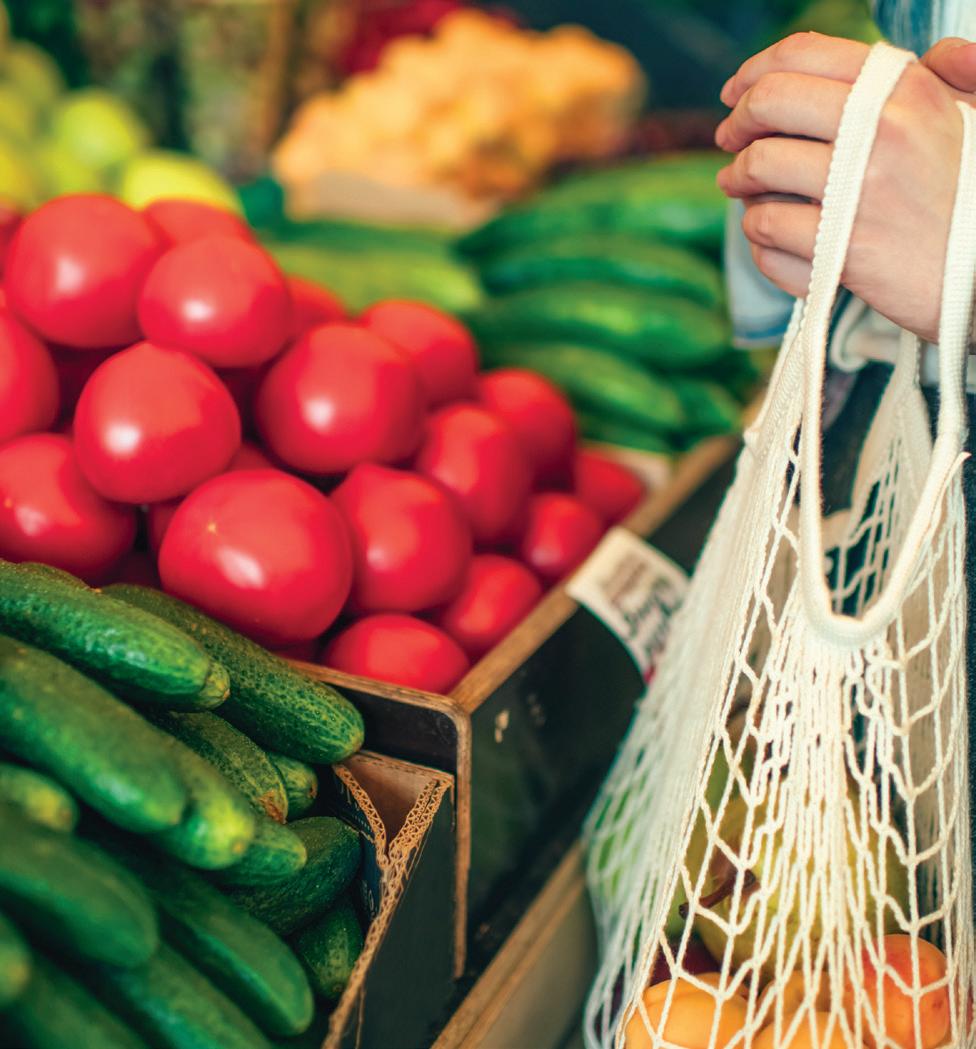
33
Mid to Long-term
2027 – 2040 Appendix
Objectives, Targets and
Actions
C
Objective 2
Reduce the quantity of waste we create.
Mid-term
2027 – 2033
Long-term
2034 – 2040
Target 2B: Support residents in making behavioural changes to reduce the amount of waste generated.
2B3 Evaluate partnerships with local charities.
2B4 Partner with local area municipalities on common messaging and approach to single use plastics and textiles.
Five-Year Action Plan 2022 – 2026 | Durham Region Long-term Waste Management Plan
Objective 3
Increase diversion of waste from disposal and support the circular economy.
Mid-term
2027 – 2033
Long-term
2034 – 2040
Target 3A: Increase diversion of organics from disposal.
3A5 Expand collection services to more multi-residential buildings to divert more material.
Target 3D: Advocate for the expansion of existing EPR programs and for additional EPR programs to manage more materials.
3D3 Advocate to the Federal and Provincial governments for new EPR programs to divert more materials from disposal.
3D4 Advocate for existing programs to be expanded (e.g., recycling, hazardous waste, electronics).
3D5 Provide comments on any proposed EPR regulations to ensure Durham Region’s considerations are included.
35
Objective 4
Support the Region’s greenhouse gas reduction and climate change mitigation efforts.
Mid-term 2027 – 2033
Long-term 2034 – 2040
Target 4A: Develop initiatives to offset or reduce GHG emissions from solid waste that contribute to Corporate GHG emissions.
4A5 Develop a carbon emissions management plan in partnership with the Region’s Sustainability group.
4A6 Work with other divisions to leverage the Region’s buying power to develop in-house Circular Economy Initiatives.
4A7 Explore options to reduce GHGs at Waste Management Facilities (WMF) through wind/solar installations, carbon capture technologies and other methods to offset emissions.
4A8 Explore opportunities to reduce emissions from some/all fleet vehicles through alternative fuels or technologies.
4A9 Assess operational practices at WMFs that would reduce emissions from transportation.
4A10 Technology review of CO2 capture and utilization and/or offset options for expanded DYEC.
Five-Year Action Plan 2022 – 2026 | Durham Region Long-term Waste Management Plan
Objective 5
Protect or improve water, land, and air quality in Durham Region.
Mid-term
2027 – 2033
Long-term
2034 – 2040
Target 5A: Optimize the operation and utilization of Waste Management Facilities.
5A3 Explore options to optimize Brock and Scugog WMFs.
5A4 Evaluate business case to develop a new WMF or smaller drop-off depots.
Target 5B: Increase accessibility of waste management programs and services.
5B3 Explore options for assisted waste collection to help residents manage set out of materials.
Target 5C: Explore options to reduce environmental impacts of closed landfills and potential for future community use and/or naturalization.
5C2 Evaluate additional options to minimize landfill GHG generation and other environmental impacts.
5C3 Evaluate potential to implement the alternative cover system at other Region-owned closed landfills.
5C4 Explore options to install solar covers at closed landfills.
5C5 Evaluate potential to utilize closed landfills for community use.
5C6 Explore options to naturalize closed landfills.
37
To learn more and read the full Long-term Waste Management Plan, visit durham.ca/WastePlan.
If you require this information in an accessible format, please contact 311 (within Regional limits) or 905-668-7711 (toll-free at 1-800-372-1102 ).




 DURHAM REGION LONG-TERM WASTE MANAGEMENT PLAN
DURHAM REGION LONG-TERM WASTE MANAGEMENT PLAN





















